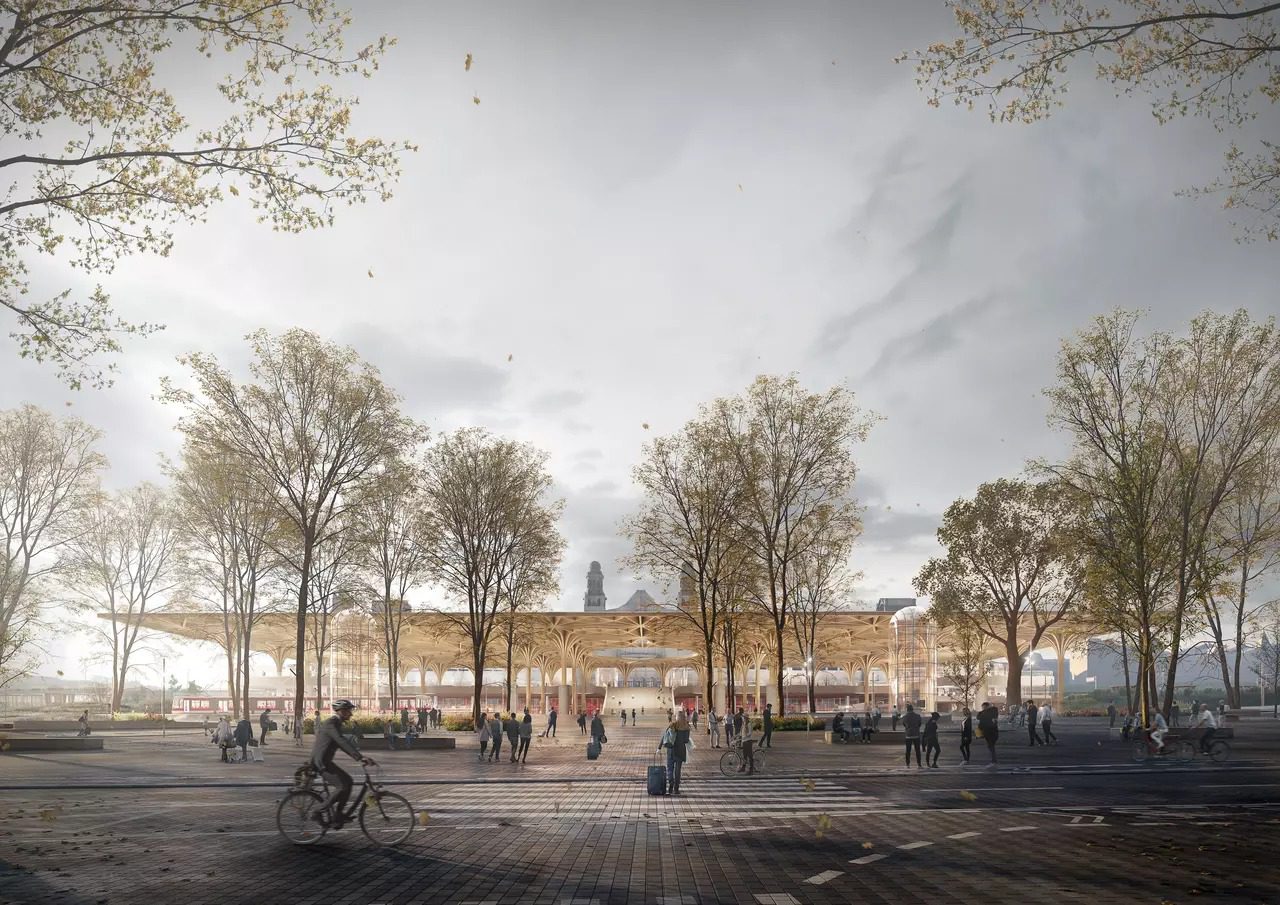In a remarkable architectural feat, the area in front of Prague’s central railway station is about to transform significantly. A Danish design studio, Henning Larsen Architects, has proposed a wooden structure that is expected to emerge in the future. With trams traversing the park in front of the station, the entire area will experience a radical makeover, set to commence in 2028, according to plans.
The winning proposal, unveiled by architects, Prague representatives, and railway administration officials, has been named “Happy Hlavák.” The focal point of the design is a wooden structure expected to rise in the area in front of the check-in hall.
The proposal envisions the creation of a tram stop directly in front of the hall and a connection towards the nearby Masaryk station. The design also considers the vision of calming down the highway where a crossing should arise.
The Danish architects conceived the park and the check-in hall as a whole. For example, the paving stones passengers know from the check-in hall will also be used within the park. Additionally, the park is expected to be much more utilized, especially in connection with Masaryk station, which will be the starting point for trains heading to Prague airport.
The park is expected to feature water elements and cafes, transforming the area currently occupied by people experiencing homelessness for most of the day into a dignified place. The deputy mayor for transport, Zdeněk Hřib, eagerly awaits this transformation. “Although the proposal seems rather radical, it dealt well with the space in the Prague heritage reservation. It preserves historical architectural elements that it further develops, and at the same time, plans to renovate and revive the area in front of the Fantova building,” stated Jaroslav Wertig, chairman of the evaluation commission.
The railway administration expects the renovation to link the check-in hall with the historic Fantova building, which underwent reconstruction recently. “I believe that it will once again achieve its glory and become a widely used part of the main station complex in Prague,” said the head of the railway administration, Jiří Svoboda.





